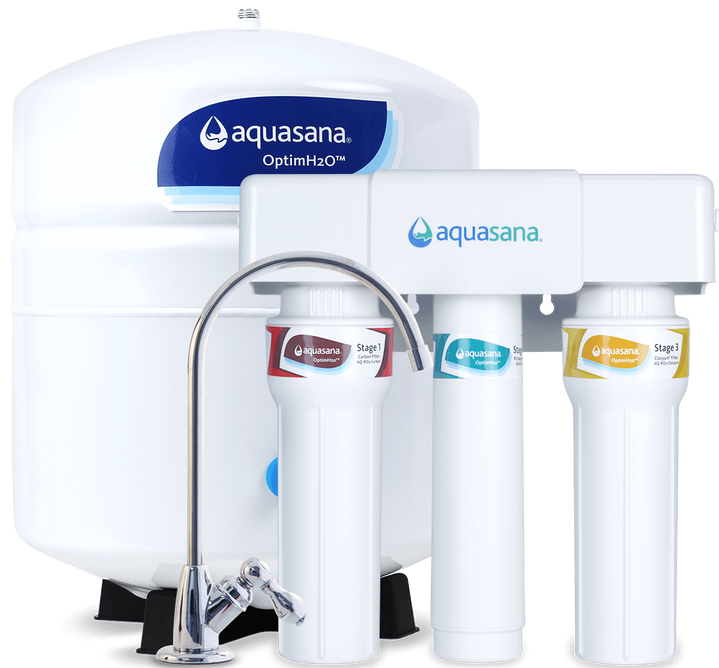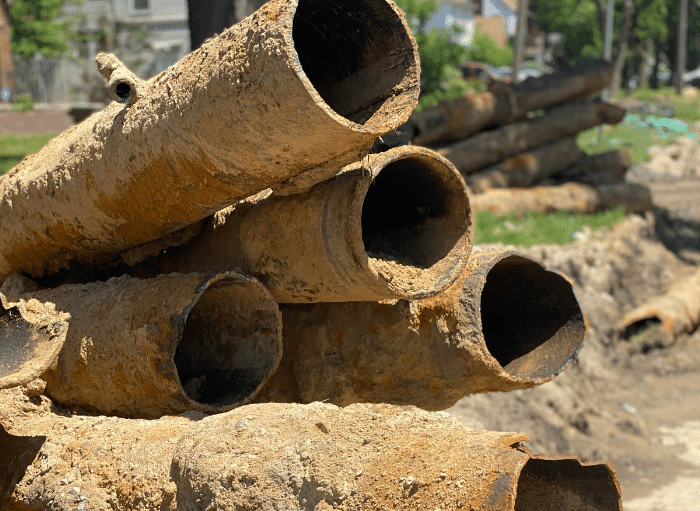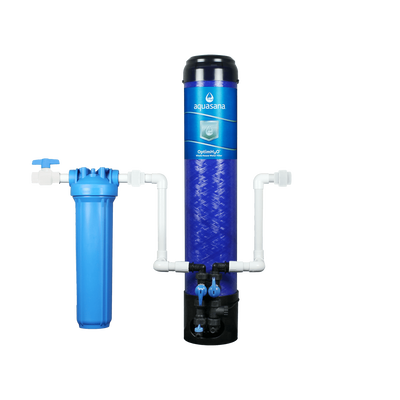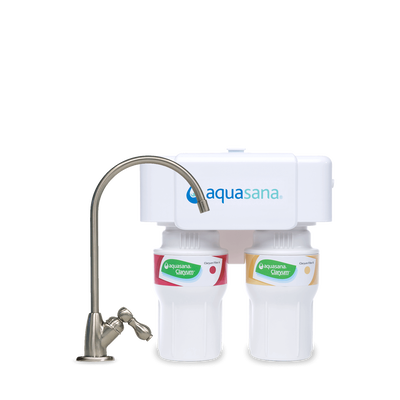States with the best tap water in the U.S.
While some states settle for water that meets the minimum requirement of being drinkable, the best tap water in the U.S. comes from these states that often go the extra mile with stricter drinking water testing and standards.
- Rhode Island:Because the small state of Rhode Island enjoys an abundance of water resources, the state carefully monitors all bodies of water. According to the Office of Water Resources, over 90% of the state’s groundwater is considered suitable for drinking. The Office of Water Resources controls wastewater discharges, prevents groundwater pollution, and more.
- South Dakota: South Dakota water systems pride themselves on having a superb track record, meeting the EPA goal of having 95% of water users in the state meeting all health standards related to tap water. Additionally, Mid-Dakota has received the Secretary’s Award for Drinking Water Excellence for 16 consecutive years providing safe water without a violation.
- Minnesota: The Minnesota Department of Health focuses on the public water suppliers by protecting through grants, coordinating training for water operators, and more. Duluth, Minnesota won the 2013 “Best in Glass” drinking water taste test which included three other Minnesota cities in the running.
- New Hampshire: New Hampshire has one of the nation’s strictest drinking water standards. In 2019, the New Hampshire Department of Environmental Services proposed new testing for contaminants such as PFAS – the harmful contaminant found in non-stick cookware.
- Connecticut: The state of Connecticut has very high-quality tap water as it is only one of the two states that prohibit discharges from wastewater treatment plants within public water supply watersheds. Meaning, the public water has very little exposure to pharmaceuticals and other harmful contaminants.
- Vermont: In Vermont, about 70% of residents get their drinking water from public systems that are closely monitored for contamination. Out of the 70%, 97% are satisfied with their drinking water.
- Kansas: About 96% of Kansans receive water from public water supplies that meet or exceed all state and federal regulations for clean water, according to Mike Tate, Director of the Bureau of Water for the Kansas Department of Health and Environment. Emporia, Kansas is known for having clean, great-tasting water as it won the Best Tap Water prize at the 23rd annual Berkeley Springs International Water Tasting.
- Missouri: Missouri has some of the best drinking water not just in the U.S., but in the world. In fact, the city of Independence has been named among the top five best-tasting tap waters in the world seven times in eight years at the Berkeley Spring International Water Testing Competition.
- Oregon: Oregon’s water supply has tested incredibly clean as the majority of Portland’s water flows from the pristine Bull Run Watershed. Test results on the watershed’s two reservoirs show very low levels of naturally occurring contaminants like giardia and bacteria.
- Massachusetts: According to the MassDEP Drinking Water Program, Massachusetts has some of the highest quality drinking water in the country and some of the strictest standards. Watersheds in the state are protected by the Massachusetts Water Resources Authority, which ensures that all forests in the area are protected as well. These forests naturally clean the water so that by the time it gets to the city, the water requires minimal filtering.

States with the worst tap water in the U.S.
These states may feature scenery and some of the nation’s most thriving cities, but residents and anyone considering becoming one should be aware that they also happen to have the worst tap water in the U.S.
- Arizona: Not only is water scarce In Arizona, but a recent study shows that Phoenix tap water has the highest average levels of chromium-6 as well as PFAS (polyfluoroalkyl substances) . According to this report by the NRDC, “When examining slow or inadequate enforcement actions, we identified 437 counties across the country with the longest average length of time out of compliance per system and the highest racial, ethnic, and language vulnerability. These counties were predominantly in the southwest, including nearly every county in Arizona.” Arizona has been so far out of compliance for drinking water standards this study specifically calls them out for their poor drinking water quality.
- California: Most of the state’s poor quality of drinking water comes from the rural areas. Many of the farming communities in California are drinking from arsenic and uranium-contaminated water systems. California also has a problem with nitrates in their water system due to the vast amount of agriculture that occurs in the state. These nitratest can increase instances of cancers, and in children under 6 months old can cause methemoglobinemia (blue baby syndrome) according to the MN department of health. Methemoglobinemia can result in other symptoms such as decreased blood pressure, increased heart rate, headaches, stomach cramps, and vomiting.
- Ohio: Because Ohio is one of the nation’s largest industrial centers, the water in the state suffers, resulting in high levels of lead found in the tap water. Combined with poor mining practices and old pipes, many residents in Ohio are served contaminated water. Lead is one of the largest problems associated with Ohio, but they also have issues with sulfates and iron.
- Washington: Washington has problems with runoff from constant rain affecting their water quality, and a growing population leads to many issues with their water system. Outside of Seattle’s city limits, residents of Washington’s water look a little different. Chromium, chloroform, arsenic, uranium, nitrate, radon, and radium are a handful of contaminants in the state’s water.
- Puerto Rico: Natural disasters are also a major contributor to unclean water. After Hurricane Irma and Maria hit Puerto Rico in 2017, the island has been suffering from water that is filled with sediment. Often getting put on boil water notices, there are times Puerto Ricans don't have access to clean and easily drinkable water due to infrastructure problems.
- Georgia: Due to polluted rivers, streams, and wells in Georgia, the state’s water quality is very poor. These contaminants include chromium, arsenic, chloroform, radium, bromate, chlorate, and radium all reported well legal guidelines. This leads to some of the worst water in the US, with high levels of multiple contaminants in their system.
- New Jersey: High levels of PFAS are present in New Jersey’s water system. This synthetic, toxic chemical used for New Jersey’s industrial centers has lingered in the water for many years. This chemical, used for grease, water, and heat-resistant properties, is being phased out of production but remains in the state’s tap water today. Thankfully, it does look as though New Jersey is cracking down on their PFOA problem. According to this article, if water exceeds the new standards of 14 parts per trillion for PFOA and 13 parts per trillion for PFOS New Jersey utility operators have to install treatment systems or take their wells offline. Hopefully soon New Jersey will not be on the list of worst tap water in the United States.
- Pennsylvania: For many years, Pennsylvania's economy relied on coal mining, which led to pollution. According to a recent study, 20,000 miles of streams in the state do not meet federal standards for fishing and swimming. In addition to contaminated streams, many abandoned gas and oil wells are attributed to leaking contaminants into the groundwater.
- Florida: Florida’s tap is so bad because of the two ecological emergencies the state experienced in 2018. During the summer of 2018, red tide microorganisms flooded into the Gulf of Mexico, and toxic blue-green algae flowed into rivers, lakes, and oceans. Additionally, the state experiences high levels of fertilizer and other pollutants due to the freshwater algae blooms. Natural disasters often affect Florida’s water as hurricanes and storms result in flooding, which in turn affect the water systems. Florida also has infrastructure issues that lead to the state having worse tap water when compared to most states. According to the Southern Regional Water Program, Florida’s “unique hydrogeologic features of a thin soil layer, high water table, porous limestone and large quantities of rainfall coupled with rapid population growth, result in a groundwater resource extremely vulnerable to contamination.”
- Texas: The most affected areas of Texas are the rural areas, making up over 15% of the large state. Because resources are scarce, and pipes are often old in these smaller towns, lead, radiation, and arsenic can be found in public water. Texas has also had issues with boil water notices during their “Snowpocalypse” of 2021. With the failure of their power grid, many water treatment plants were out of commission causing large swaths of Texas to be issued a boil water notice.

If you live in a state that has bad tap water
If you live in one of the states that made the “Worst Tap Water in the U.S.” list, there’s no need to pack your bags. While there are alternatives to drinking tap water, we highly recommend investing in a water filtration system. If you think bottled water is a good alternative to dirty tap water, we’ve compiled a list of disadvantages against the wasteful and expensive product in our article, Bottled Water vs. Filtered Water. Filtering your tap water at home can remove harmful contaminants, helping your health in the long run. If you’re interested in filtering your home’s water, but not sure where to start, we recommend starting with looking over a water quality report from your local municipality. Interpreting your city’s water report is simple, with the help of this article. Once you know what contaminants are found in your drinking water, you can better choose a water filter with our helpful guide. If you’re wanting to filter the water in your home from every faucet, you would need to consider a whole house water filter. Or, if you’re only concerned about the water you drink, under sink and countertop filters can be an easy and quick option to get clean, healthy water.
Even if your state appears to have some of the cleanest water in the U.S., there’s still a chance unseen, harmful contaminants can be in the water. To learn more about Aqusana’s water filters and how they can help improve the safety and taste of your tap water, contact our Customer Service Team.



